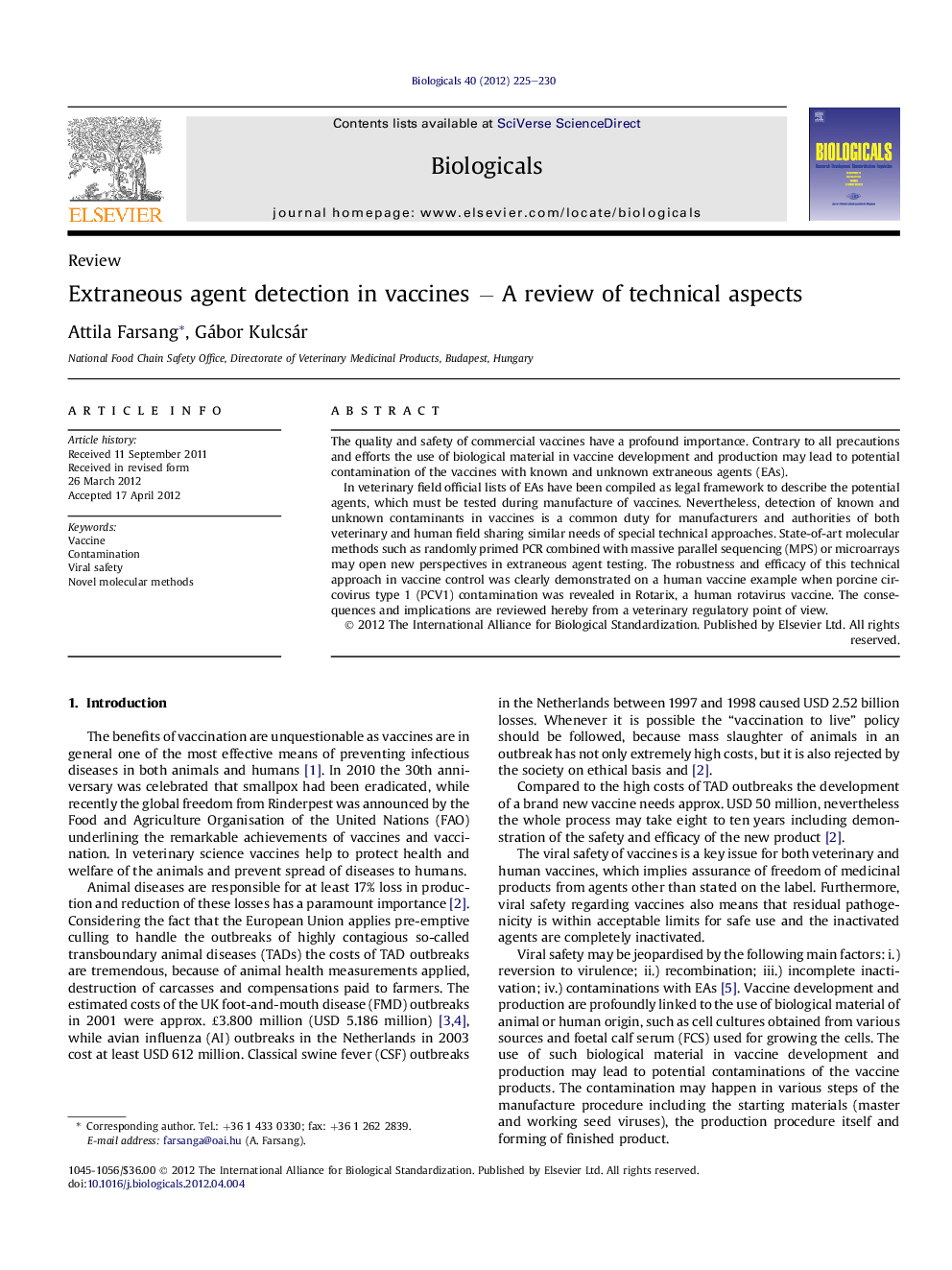| Article ID | Journal | Published Year | Pages | File Type |
|---|---|---|---|---|
| 2034076 | Biologicals | 2012 | 6 Pages |
The quality and safety of commercial vaccines have a profound importance. Contrary to all precautions and efforts the use of biological material in vaccine development and production may lead to potential contamination of the vaccines with known and unknown extraneous agents (EAs).In veterinary field official lists of EAs have been compiled as legal framework to describe the potential agents, which must be tested during manufacture of vaccines. Nevertheless, detection of known and unknown contaminants in vaccines is a common duty for manufacturers and authorities of both veterinary and human field sharing similar needs of special technical approaches. State-of-art molecular methods such as randomly primed PCR combined with massive parallel sequencing (MPS) or microarrays may open new perspectives in extraneous agent testing. The robustness and efficacy of this technical approach in vaccine control was clearly demonstrated on a human vaccine example when porcine circovirus type 1 (PCV1) contamination was revealed in Rotarix, a human rotavirus vaccine. The consequences and implications are reviewed hereby from a veterinary regulatory point of view.
